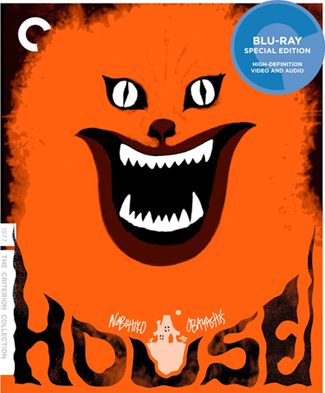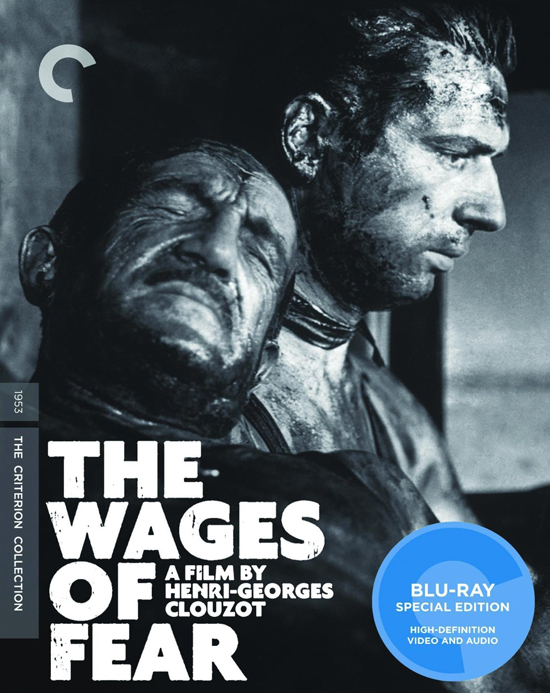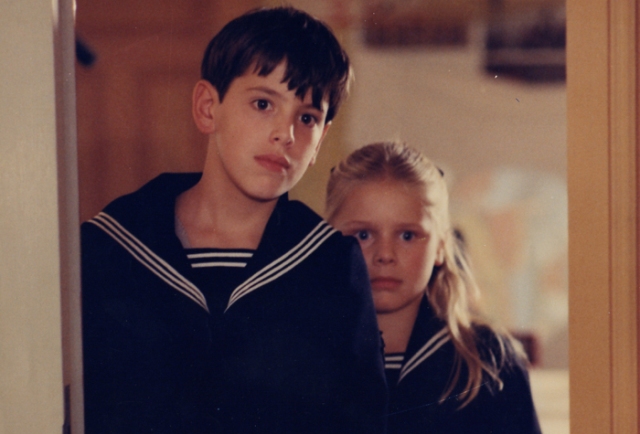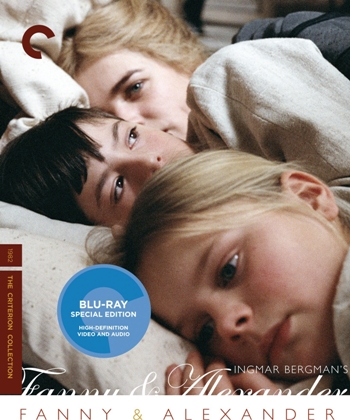
Apart from the many collections of classics both from different eras of Hollywood history and the best from the international market, the Criterion library also has plenty of titles to choose from cinemas most esteemed artists. In some cases, Criterion is the only source for the complete works of some of the most notable film directors of all time, especially in the North American market. It’s the only place you’ll find the complete filmographies of international icons like Akira Kurosawa, Ingmar Bergman, Federico Fellini, and Jean-Luc Godard. The Collection also gives special treatment to renowned homegrown American filmmakers who work outside the Hollywood system and are rewarded with a special spotlight in a Criterion home video release. These include independent cinema icons like Richard Linklater who has films like Dazed and Confused (1993, Spine #336) Boyhood (2014, #839), and the Entire Before trilogy are part of the collection. Also there is Jim Jarmausch, whose Stranger than Paradise (1984, #400) and Dead Man (1995, #919) are also a part of the collection. And then there are the directors whose filmography are more, shall we say, dense by comparison. Some would even say impenetrable due to the filmmakers very aware and self-indulgent style. The most likely candidate for this would be David Lynch, whose trippy and noteworthy work like Eraserhead (1977, #725) and Mullholland Drive (2001, #779) have made it into the Criterion library. David Cronenberg’s likewise grotesque style has also made it into the collection with Videodrome (1983, #248) and Scanners (1981, #712). And on the other end of the spectrum, the whimsical but very stylized movies of Wes Anderson, like Moonrise Kingdom (2012, #776) and Rushmore (1998, #65). But there is an even more enigmatic director out there whose films are beginning to find their home completely within the Criterion Collection; the very mysterious Terrence Malick.
Thus far, Malick’s films up to the early 2010’s have all made it into the Collection, and with them, you see one of the most peculiar progressions a film director’s career has ever taken. One thing that Terrence Malick is probably most known for is the 19 year gap that he had between his second and third features. He started off strong in his career right out of film school, directing the critically acclaimed Badlands (1973, #651) and following that up with the equally beloved Days of Heaven (1978, #409), which won the Academy Award that year for it’s stunning cinematography (much of which was captured at “magic hour”, which has since become a popular visual technique for filmmakers). And then surprising after that, Malick’s career went completely silent. There were many rumors of Terrence being a recluse and hermit during those 19 years out of the business, only fueled by Malick’s insistence on privacy throughout most of his life. But, in reality, he took those years out of film-making to teach philosophy at a university in France. In time, the lure of cinema would call him back, and it would surprisingly be a war film that wound up doing it. The Thin Red Line (1998, #536) was a risk for someone so out of practice, and also because Steven Spielberg’s Saving Private Ryan (1998) was in direct competition during that same year. Though the movie wasn’t a big box office draw, it did receive an overwhelmingly positive critical reception and even was nominated for Best Picture and Best Director, both a first for Malick. But what amazed people the most is how well Malick maintained his unique cinematic voice even through the long absence. If there is one thing that defines his movies it’s that they are less story driven and more like visual poetry. And The Thin Red Line would show that Malick could take that definitive style and put it into different genres, which would explore further in his next couple features, The New World (2005, #826) and the Palm d’Or winning The Tree of Life (2011, #942). But, it’s through The Thin Red Line that we see his style put through the most grueling test and it’s easy to see why it made an ideal choice for Criterion.
The movie is based on the semi-autobiographical novel of the same name by James Jones. The Thin Red Line was the second in a trilogy of novels based on Jones’ wartime experience in WWII, the first of which was From Here to Eternity, which was made into an Oscar-winning film in 1953. The novel chronicles many different conflicts, but focuses primarily on the Battle of Guadalcanal during the Pacific campaign of the War. Malick’s adaptation is not the first even done from the novel itself, as there was one other made in 1964, starring Keir Duella. However, there are very few similarities between both features, and also between Malick’s film and the source novel. Terrence Malick is renowned for his ruthless way of editing his movies, often shifting things around at the last minute, sometimes even completely changing the intention of the footage from what he had planned from the day they were shot. Whole subplots and even characters are given the axe in his movies, and Thin Red Line is no exception. Perhaps the most notorious change he made during the editing of this film was to completely change the main character of the movie, without ever making a rewrite to the script. The way he shot the movie was closer to Jones’ original text, with the author’s surrogate, Corporal Fife, acting as the audience’s eyes and ears to the first hand experience of combat. In the movie he is played by Adrian Brody, in what would have been his first lead role in a movie. But, shockingly, Brody’s performance was nearly excised completely in the final cut, with the focus shifted to a different character instead; Jim Caviezel’s Private Witt. How you can make a movie in which the intended protagonist is turned into a minor character is mystery, but somehow Terrence Malick managed to do it, and this has commonly become a theme of his work ever since. It’s often said that Malick finds his movie in the editing room, picking and choosing footage in a way that doesn’t so much move the story but rather follows rhythm and feeling more than anything else.
It’s safe to say that Terrence Malick’s films are not for everyone. The fact that he doesn’t follow basic story-telling rules when it comes to cinema is enough to put many people off, but it’s also the thing that sets him apart as an artist as well. Truth be told, his movies in recent years have turned more self-indulgent and their lack of coherence is making them fall under more scrutiny by critics as a result, but when he began his career Renaissance with the release of Thin Red Line and through the making of The Tree of Life, he was definitely leaving his mark strongly on the world of film-making. And while his film strays wildly from the source novel in terms of character development, Malick’s style does in a way honor the spirit of the novel. One theme that defines the book Thin Red Line is that it emphasizes war as a very personal and isolating experience for every soldier, in that they suffer the horrors of war by themselves, all different from each other. One Terrence Malick trademark that the movie uses extensively is internal monologues played over montages of random visuals. In the film, the monologues are given to several different characters, Cavizel’s Witt, Sean Penn’s Sgt. Welch, Brody’s Fife, Nick Nolte’s Lt. Col. Tall, and a variety of others. And their monologues again feed into Malick’s style by emphasizing the character’s emotional state rather than spelling out exactly what they are going through. This keeps in spirit with Jones’ novel because it’s emphasizing the emotional toll that’s being taken on these different soldiers as they experience the carnage around them, and how it’s making them further isolated from each other and the world. Indulgent, yes, and it often makes the movie hard to follow at certain times. But, it does something that few other war movies have done, which is show the emotional grind that such an experience has on the human soul.
Whether the deliberate pacing and the loosely tied narrative leaves you infuriated or not, there is one thing about The Thin Red Line that is undeniable and that’s just how gorgeous it looks. The movie was shot by John Toll, who had previously won back to back cinematography Oscars for Legends of the Fall (1994) and Braveheart (1995). He would turn out to be the right DP for this production because Thin Red Line is an epic scale production, far bigger in scale than anything Malick has made before or since, which is kind of a gutsy move for a filmmaker who hadn’t made anything in almost 20 years. One thing that is also emblematic of Malick’s work is the lyrical way he observes nature in his movies. The jungles of Guadalcanal are visually stunning in this movie, especially when combined with another favorite of the director’s; the “magic hour” lighting. Malick also uses his canvas to project a wide picture of the war, with his soldiers often swallowed up by the environments they exist within. This in particular helps to separate the movie from the documentary style of Saving Private Ryan, which was shot with tight close-ups and shaky hand-held photography. Malick was less concerned with authenticity of the “you are there” experience, though he does put emphasis on the historical details, especially when it comes to the production design and costuming. But the movie deals with the horrors of war through a more poetic way, with nature metaphorically placing the turmoils that these soldiers are enduring into a metaphysical context. Malick style, particularly with his visuals, have influenced many other filmmakers. Christopher Nolan has stated that the work of Terrence Malick is a constant inspiration for him, and you can clearly see some of that in his own films. Dunkirk (2017), in particuar, feels very heavily influenced by The Thin Red Line, especially in the beachfront scenes of the former, which strongly reflect the groundlevel view of Malick’s battle scenes. It shows that even 20 years later, this war film still has left a mark on a whole new generation of filmmakers.
Criterion naturally wanted to give this beloved film the best home video presentation possible, and once again they have delivered. A new high definition digital transfer was made from the original 35 mm negative, and a restoration was conducted by Criterion under the supervision of Terrence Malick and John Toll. Special attention was put into retaining the color and lighting palettes true to the director’s vision. One thing that does set The Thin Red Line apart the most from other war flicks of it’s type is it’s abundance of lush colors, spotlighting the sun-drenched settings of it’s story. It’s also something of a trademark of the director, as his films often use color contrast as a significant narrative tool. Compare this with the de-saturation of color from Spielberg’s Saving Private Ryan, which more closely match that film’s grittier, documentary style. The vibrancy of The Thin Red Line’s color palette is served well by this new high definition transfer, as is the increased level of detail in the textures. The film’s attention to detail when it comes to the production design is also benefited by the restoration. One other restoration that has been benefited from the Criterion touch is the restored soundtrack. A certified DTS-Master mix has been cleaned up of all pops, hisses, and scratches to retain the best aural experience possible, close enough to how the film would have sounded in the theater upon it’s original release. While not as dynamic as Private Ryan’s complex soundscape, the movie still features very realistic sounding effects that make the war scenes feel true to life. However, it’s Hans Zimmer’s moody and hypnotic musical score that benefits the most from this restoration, and it’s the part of this home video presentation that will really pop out to you the most while watching the film again, even on the simplest of home sound systems. As an visual and aural experience, this Criterion presentation is the best that this movie has received in many years.
Likewise, the edition also features the Criterion Collection’s usual high quality bonus material as well. Unfortunately, because of Terrence Malick’s strict privacy rules, he is all but absent from every bonus material on this set. There isn’t even any video footage of him in the making of material, nor any recording of his voice. We do get insight from many others involved with the film though, especially from the enormous cast. First of all, there is an informative feature commentary track with John Toll, producer Grant Hill, and production designer Jack Fisk. Their conversations really help to the best insight into how the film came together, and what it is like to work under the direction of Malick. Several interviews with cast members are included, including Jim Caviezel, Kirk Acevedo, Thomas Jane, Elias Koteas, Dash Mihok, and Sean Penn. There is also an interview with Hans Zimmer about his approach to scoring the film. The film’s editors Billy Weber, Leslie Jones, and Saar Klein also are interviewed, and provide an interesting perspective the way Malick creates his vision in the editing process. We also get a very interesting interview with Kaylie Jones, the daughter of James Jones, who provides us with interesting insight into the man who crafted the original book from his own recollections of combat. Another brand new interview is conducted with casting director Dianne Crittenden, who shares rare audition material of the actors in the film, including many more stars who didn’t make the final cut. There are also fourteen minutes of cut footage from the film, which honestly is only a fraction of what really exists out there. There are also some fascinating newreels collected from the war era documenting the actual battles on the Guadalcanal and Solomon Islands. Also included are some neat, extended footage of the Melanesian tribal chants that were featured as part of the score, as well as an original theatrical trailer. All in all, another solid collection of extras, even despite the lack of input from the director himself, and further exploration into the massive production that this film was.
Terrence Malick is something of an enigma in the world of film-making, and his movies often reflect that. You’ll find just as many people who hate his self-indulgent style as you would find those who will absorb it all in happily. His work has become more divisive in recent years, as he has gone from a filmmaker of very few credits to one of many. Some would say that his continued returns are diminishing the once mythical status that his name once held. Even so, I think most will find that The Thin Red Line, his first film after a long absence and also his most ambitious in terms of scale, is the least divisive film he has made overall. While there will be some that will scoff at his proclivity towards poetics in the movie, there will be no one that will deny that the movie is exquisitely constructed and quite a harrowing experience overall. It particularly amazes me that someone like Terrence Malick could put a film of this scale and complexity together after being out of practice for so long. That in itself is a marvel of film-making, and a real testament to his skills as a director. If there is one flaw that I would give the Criterion Collection treatment of this film is that it doesn’t go far enough into exploring the real story behind the film’s making. Apparently, Malick shot enough footage to make close to three or more movies of the same length, and most of it never made it into the final cut. Full performances from other famous actors like Gary Oldman, Viggo Mortensen, Bill Pullman, Martin Sheen, and Mickey Rourke were all shot, but completely left out of the movie. I would have liked to have learned more about the movie that could have been in addition to the one that we ultimately got. But, I blame that more on the secretive director and less on Criterion’s part. They gave us the best look into the film’s making that we could get, and I’m thankful for that. If anyone is looking for an entry point into the work of Terrence Malick, The Thin Red Line would be the best place to start, and Criterion offers the best possible presentation the movie has ever received. Though filmmakers like Malick may rub some people the wrong way, at least Criterion gives those who do love their work presentations that will please overall.

















